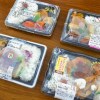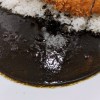When entering the grounds of a Shinto shrine in Japan, it’s customary to first stop by the water basin near the gate and rinse your hands, and sometimes your mouth, in order to cleanse them. Water isn’t the only classical element held to have purifying properties in Shintoism, though, since the same can be said about fire.
Obviously, worshippers aren’t called upon to put fire on their palms or inside their mouths. Instead, Shinto priests light pyres of charms and decorations during the Dondo Yaki ceremony, with the towering blazes regularly reaching 15 meters (49.2 feet) into the air.
The exact date varies from shrine to shrine, but most hold their Dondo Yaki ceremonies around January 15. The name is a truncated and slightly rearranged version of the Japanese phrase “Don don moeru,” or “It’s really burning.”
▼ We’d say that’s an appropriate description.
クマムシさんどんどん焼きに来たよ!写真撮ってるお隣に世田谷区長がいたよ。 pic.twitter.com/T2URV9beRT
— 高野香織「B39」テディベアコンベンション (@kor_04) January 18, 2015
どんどやき 。よい燃えっぷり。 pic.twitter.com/JD9ZCxPEpY
— 森本千絵 (@morimotochie) January 18, 2015
どんどやき 。よい燃えっぷり。 pic.twitter.com/JD9ZCxPEpY
— 森本千絵 (@morimotochie) January 18, 2015
Since most Japanese companies and schools start back up on January 4, waiting until January 15 gives people plenty of time to take down their New Year’s decorations, such as the wreath-like ropes called shime nawa.
If you’re headed to a Dondo Yaki ceremony, though, there’s no need to worry about boxing them up and sticking them back in the closet for another year. Instead, just hand it off to be tossed onto the pile, sit back, and watch it burn.
クマムシさんどんどん焼きに来たよ!写真撮ってるお隣に世田谷区長がいたよ。 pic.twitter.com/T2URV9beRT
— 高野香織「B39」テディベアコンベンション (@kor_04) January 18, 2015
Given the nature of the event, obviously it’s held outdoors. Being exposed to the elements means sometimes having to contend with strong winds, as Twitter user Imuka says this pyre was twice as tall before the gusts picked up.
近所のグランドでどんど焼きやってた。
— imuka (@imuka) January 11, 2015
強風の煽りでこの倍くらい燃え盛ってたよ。 pic.twitter.com/D755jZpJsB
The dramatic effect is amplified at nighttime festivities, where attendees are silhouetted against the flickering flames.
https://twitter.com/yudai20000930/status/555313903249268737Some communities toss their daruma, one-eyed wish granting good luck charms, into the fire. In Gunma Prefecture’s Takasaki, they’re even wrapped around the scaffolding itself.
https://twitter.com/kousagimasiro08/status/554510126913056768なので、群馬や特に高崎周辺を推すなら、だるまとかそれにまつわる習慣を紹介すると面白いのかな、なんて。どんど焼き自体は、名前違っても同様の行事はあるようですが、だるま燃えがほんと衝撃みたいです。ちなみにこれが先日の写真。 pic.twitter.com/xrvVnp7bnl
— りお (@rio0328) January 15, 2015
If you’re the kind of person who can’t see a bonfire without thinking barbeque, you’ll be happy to know that the festivities often close with a little bit of open-air cooking. It’s said that eating mochi dumplings called mayu dama will help ward off colds during the year, and many people stick theirs on bamboo skewers, pass them through the dying flames for a quick roast, and eat them on the spot.
どんど焼きの後はみんなでお餅を焼いて食べて・・・今年も無病息災だよ( ^_^) pic.twitter.com/zGYQfQBvhy
— 農家のおっちゃん (@FarmKitamura) January 11, 2015
The mayu dama themselves are incredibly colorful, standing in cute contrast to the wickedly awesome columns of fire.
https://twitter.com/xxM0N0_ism/status/555272060998414336As a matter of fact they’re so playful-looking that some people shape theirs like popular anime or Disney characters.
https://twitter.com/cute_sayaka02/status/555233574144585729▼ We’re always happy to see more Baymax mochi.
https://twitter.com/erkavkaz/status/554105987393548289And while it may not be the norm, no one’s going to stop you if you decide to throw a handful of mayu dama into your Japanese-style nabe hotpot.
▼ Especially if you make enough to share
https://twitter.com/smileysuu/status/556772317611556864Although you might want to limit your generosity by not feeding your friends and family the same mochi you used to make a special collar for your dog, like this one animal lover decided to do.
どんど焼き☆春を迎える大切な行事。私は仕事の為母がお世話になっている神社へ。あれれ?てんの首にも、どんど焼きの団子発見(^_-)焼いたら砂糖正油で食べるべし(^^)ρそして太るべし(^^)ノもうすぐ春がやってくる♪ pic.twitter.com/rxjjEgh8Y1
— みっくさん (@tenchankuroguro) January 14, 2015
Still, the above photo is proof that Dondo Yaki has a little something for everyone, whether you’re a devout Shinto believer, student of Japanese culture, seasonal gourmand, or just an ordinary pyromaniac.
Source: Naver Matome

 Japanese convenience store FamilyMart inadvertently gives away pearl in pack of seafood snacks
Japanese convenience store FamilyMart inadvertently gives away pearl in pack of seafood snacks Part of the family – Tokyo Shinto shrine’s blessings for children now available for pets too
Part of the family – Tokyo Shinto shrine’s blessings for children now available for pets too Japanese shrine maidens in Osaka spotted wearing unusual costumes during winter
Japanese shrine maidens in Osaka spotted wearing unusual costumes during winter TripAdvisor Japan announces the country’s 10 favorite shrines and temples
TripAdvisor Japan announces the country’s 10 favorite shrines and temples Gunma’s yaki manju, unknown to most Japanese people, are the best manju we’ve ever had
Gunma’s yaki manju, unknown to most Japanese people, are the best manju we’ve ever had Disney princesses get official manga makeovers for Manga Princess Cafe opening in Tokyo
Disney princesses get official manga makeovers for Manga Princess Cafe opening in Tokyo Foreign English teachers in Japan pick their favorite Japanese-language phrases【Survey】
Foreign English teachers in Japan pick their favorite Japanese-language phrases【Survey】 Is the new Shinkansen Train Desk ticket worth it?
Is the new Shinkansen Train Desk ticket worth it? Beautiful new Final Fantasy T-shirt collection on the way from Uniqlo【Photos】
Beautiful new Final Fantasy T-shirt collection on the way from Uniqlo【Photos】 Osaka’s creepy cute mascot speaks for first time, adds more fuel the creepy OR cute debate【Video】
Osaka’s creepy cute mascot speaks for first time, adds more fuel the creepy OR cute debate【Video】 Kyushu-exclusive Black Mont Blanc goes nationwide in a “Special” way
Kyushu-exclusive Black Mont Blanc goes nationwide in a “Special” way Starbucks releases a special sparkly tumbler in Japan to support diversity
Starbucks releases a special sparkly tumbler in Japan to support diversity Hey, Japanese taxi driver! Take us to your favorite restaurant in Tsuruga City!
Hey, Japanese taxi driver! Take us to your favorite restaurant in Tsuruga City! We taste makunouchi bento at four Japanese convenience store chains【Taste comparison】
We taste makunouchi bento at four Japanese convenience store chains【Taste comparison】 Japanese hotel has rooftop hot spring bath, unlimited sushi and alcohol, costs less than 80 bucks
Japanese hotel has rooftop hot spring bath, unlimited sushi and alcohol, costs less than 80 bucks Our Japanese reporter visits Costco in the U.S., finds super American and very Japanese things
Our Japanese reporter visits Costco in the U.S., finds super American and very Japanese things New Studio Ghibli bedding sets are cool in all senses of the word
New Studio Ghibli bedding sets are cool in all senses of the word We try out “Chan Ramen”, an underground type of ramen popular in the ramen community
We try out “Chan Ramen”, an underground type of ramen popular in the ramen community New Pokémon cakes let you eat your way through Pikachu and all the Eevee evolutions
New Pokémon cakes let you eat your way through Pikachu and all the Eevee evolutions There’s a park inside Japan where you can also see Japan inside the park
There’s a park inside Japan where you can also see Japan inside the park Japanese black curry “experiment” takes place at an unlikely restaurant branch in Tokyo
Japanese black curry “experiment” takes place at an unlikely restaurant branch in Tokyo Japanese convenience store packs a whole bento into an onigiri rice ball
Japanese convenience store packs a whole bento into an onigiri rice ball New definition of “Japanese whiskey” goes into effect to prevent fakes from fooling overseas buyers
New definition of “Japanese whiskey” goes into effect to prevent fakes from fooling overseas buyers Uniqlo opens its first Furugi Project secondhand clothing pop-up shop in Tokyo
Uniqlo opens its first Furugi Project secondhand clothing pop-up shop in Tokyo Studio Ghibli releases Kiki’s Delivery Service chocolate cake pouches in Japan
Studio Ghibli releases Kiki’s Delivery Service chocolate cake pouches in Japan Japan’s bone-breaking and record-breaking roller coaster is permanently shutting down
Japan’s bone-breaking and record-breaking roller coaster is permanently shutting down Toyota built a life-sized Miraidon Pokémon and are letting people test drive it this weekend
Toyota built a life-sized Miraidon Pokémon and are letting people test drive it this weekend Foreign passenger shoves conductor on one of the last full runs for Japan’s Thunderbird train
Foreign passenger shoves conductor on one of the last full runs for Japan’s Thunderbird train Kyoto bans tourists from geisha alleys in Gion, with fines for those who don’t follow rules
Kyoto bans tourists from geisha alleys in Gion, with fines for those who don’t follow rules Studio Ghibli unveils Mother’s Day gift set that captures the love in My Neighbour Totoro
Studio Ghibli unveils Mother’s Day gift set that captures the love in My Neighbour Totoro Domino’s Japan now sells…pizza ears?
Domino’s Japan now sells…pizza ears? New Japanese KitKat flavour stars Sanrio characters, including Hello Kitty
New Japanese KitKat flavour stars Sanrio characters, including Hello Kitty Sales of Japan’s most convenient train ticket/shopping payment cards suspended indefinitely
Sales of Japan’s most convenient train ticket/shopping payment cards suspended indefinitely Sold-out Studio Ghibli desktop humidifiers are back so Totoro can help you through the dry season
Sold-out Studio Ghibli desktop humidifiers are back so Totoro can help you through the dry season Japanese government to make first change to romanization spelling rules since the 1950s
Japanese government to make first change to romanization spelling rules since the 1950s Ghibli founders Toshio Suzuki and Hayao Miyazaki contribute to Japanese whisky Totoro label design
Ghibli founders Toshio Suzuki and Hayao Miyazaki contribute to Japanese whisky Totoro label design Doraemon found buried at sea as scene from 1993 anime becomes real life【Photos】
Doraemon found buried at sea as scene from 1993 anime becomes real life【Photos】 Tokyo’s most famous Starbucks is closed
Tokyo’s most famous Starbucks is closed One Piece characters’ nationalities revealed, but fans have mixed opinions
One Piece characters’ nationalities revealed, but fans have mixed opinions We asked a Uniqlo employee what four things we should buy and their suggestions didn’t disappoint
We asked a Uniqlo employee what four things we should buy and their suggestions didn’t disappoint Princesses, fruits, and blacksmiths: Study reveals the 30 most unusual family names in Japan
Princesses, fruits, and blacksmiths: Study reveals the 30 most unusual family names in Japan Studio Ghibli’s new desktop Howl’s Moving Castle will take your stationery on an adventure
Studio Ghibli’s new desktop Howl’s Moving Castle will take your stationery on an adventure Survey ranks the most popular Japanese curry dishes during winter
Survey ranks the most popular Japanese curry dishes during winter Japan Airlines staff reassigned to work as shrine maidens during coronavirus travel downturn
Japan Airlines staff reassigned to work as shrine maidens during coronavirus travel downturn To hike or hibernate for the winter? The woes of a Hokkaido University student
To hike or hibernate for the winter? The woes of a Hokkaido University student Beat the heat with these 14 adorable daikon dishes!
Beat the heat with these 14 adorable daikon dishes! Tech geek heaven: Japan’s first do-it-yourself keyboard specialist shop opens in Akihabara
Tech geek heaven: Japan’s first do-it-yourself keyboard specialist shop opens in Akihabara Mochi continues to be Japan’s deadliest New Year’s food, causes two deaths in Tokyo on January 1
Mochi continues to be Japan’s deadliest New Year’s food, causes two deaths in Tokyo on January 1 Heavy snowfall gives the people of Japan a chance to show off their secret sculpting skills【Pics】
Heavy snowfall gives the people of Japan a chance to show off their secret sculpting skills【Pics】 Make a bold fashion statement by swapping your briefcase for a teapot bag!
Make a bold fashion statement by swapping your briefcase for a teapot bag! Kyoto book cafe serves up cute cat parfaits in traditional Japanese machiya townhouse
Kyoto book cafe serves up cute cat parfaits in traditional Japanese machiya townhouse New ‘Shrine Cafe’ in Tokyo offers fortune-telling and counseling services with your tea
New ‘Shrine Cafe’ in Tokyo offers fortune-telling and counseling services with your tea Attack on Titan’s Universal Studios Japan attraction opens
Attack on Titan’s Universal Studios Japan attraction opens Japanese photographer captures beauty of Tokyo after dark in atmospheric photo collection
Japanese photographer captures beauty of Tokyo after dark in atmospheric photo collection 10 reasons why Japan’s Kuroneko Yamato is probably the best delivery service in the world
10 reasons why Japan’s Kuroneko Yamato is probably the best delivery service in the world A+ in kindness — Tsukuba university donates over 19 tons of food to students during pandemic【Vid】
A+ in kindness — Tsukuba university donates over 19 tons of food to students during pandemic【Vid】 Travelers’ misguided attempt to earn good luck is damaging Japan’s most famous torii shrine gate
Travelers’ misguided attempt to earn good luck is damaging Japan’s most famous torii shrine gate
Leave a Reply